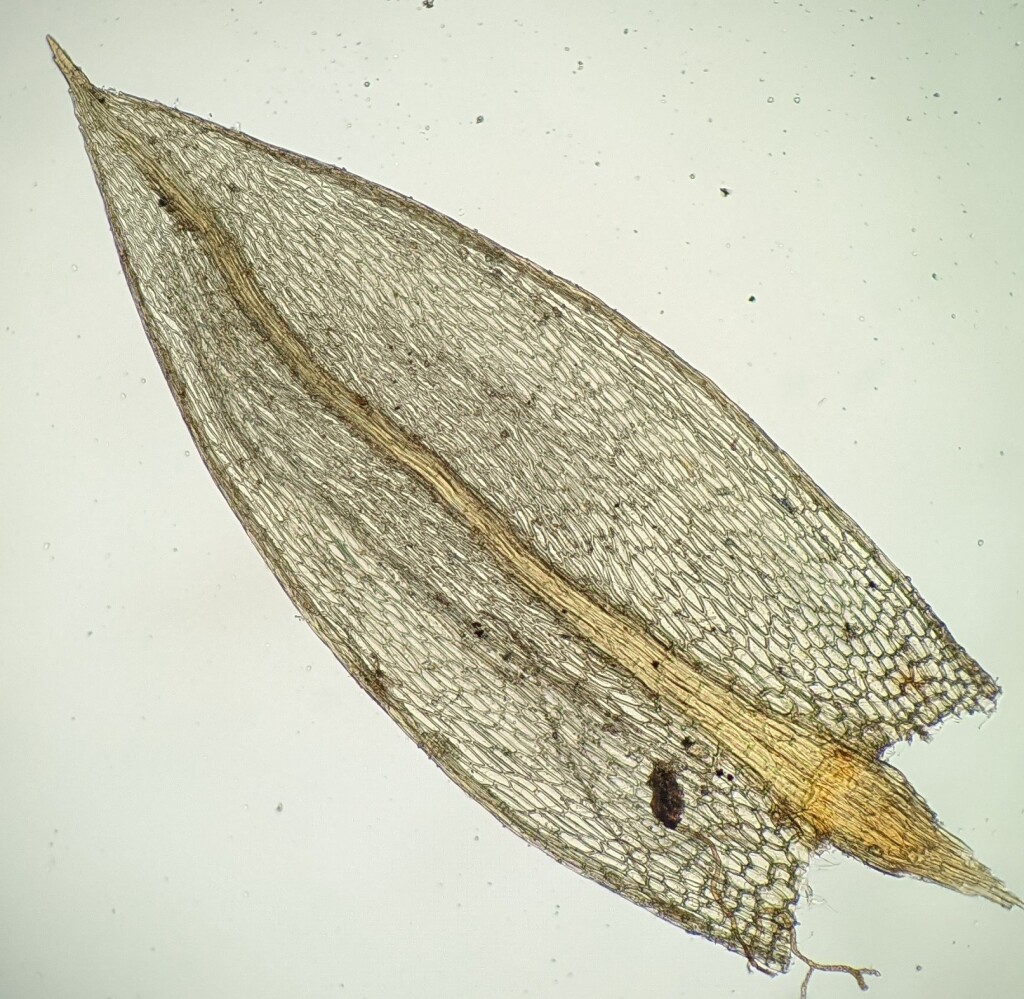Rosulabryum
Dioicous or rarely synoicous or polyoicous. Asexual reproduction by rhizoidal tubers or filamentous axillary gemmae. Turves or tufts on soil, logs, rocks or trees (not in Victoria). Stems simple or branched by innovation, tomentose near base or with scattered rhizoids; central strand present. Leaves ovate, obovate to spathulate, crowded in a terminal rosette, erect- to wide-spreading when moist, contorted or spirally twisted around stem, or scarcely altered when dry; apex acute, acuminate or cuspidate, often with a hairpoint or mucro; costa excurrent; margin denticulate to serrate in apical half, rarely entire throughout (not in Victoria), plane or recurved, usually with a border of thickened linear cells; laminal cells hexagonal to rhombic, becoming rectangular and longer toward base, smooth; alar cells not differentiated. Capsule inclined to pendent, straight or curved, clavate or pyriform to cylindric, with a revoluble annulus. Calyptra cucullate, smooth, glabrous. Operculum conic, sometimes apiculate. Peristome double; endostome the same height as exostome, with a basal membrane 1/3–2/3 the length of exostome; cilia present.
Temperate to tropical regions with potentially up to 100 species (Spence & Ramsay 2006); nine species in Victoria.
The description of Rosulabryum provided applies to Rosulabryum in a narrow sense, which is close to what was described by Spence (1996) and then adopted for the Flora of Australia (Spence & Ramsay 2006). However, this genus is unlikely to be a good representation of a single genetic lineage in its current circumscription. In phylogenies of DNA sequences from all genomic compartments, Rosulabryum, represented by R. billarderi (Schwägr.) Spence, formed a group with Brachymenium sect. Brachymenium (Cox & Hedderson 2003; Pedersen & Hedenäs 2005). This group resembles group “R” of Spence (1987), which includes species with rosetted obovate leaves and laminal cells that are short, broad and usually rhomboid, becoming more elongate and regularly rectangular toward the base. Despite the gametophytes often being indistinguishable, Spence (1996) preferred to maintain Brachymenium as distinct from Rosulabryum due to its epiphytic occurrence and its differing sporophyte that comprises an erect globose capsule with a reduced peristome without cilia and endostome segments or with the endostome segments shortened or fused with the exostome. However, since this time, species with reduced peristomes and erect capsules have been repetitively shown to be closely related to species without these peristome reductions, with such reductions a likely a response of transition to epiphytic occurrence (e.g. Huttunen et al. 2004; Hedenäs 2012). Consequently, peristome reduction is now understood to not always be a reliable character for delimiting moss genera. With further species sampling and molecular study it is likely that these two genera will be merged, with Brachymenium the older name that would take preference.
Rosulabryum capillare (Hedw.) J.R.Spence is recognised here in Ptychostomum based on its closer relatedness to species traditionally placed in this genus (Holyoak & Pedersen 2007). Spence & Ramsay (2013) did not follow these changes instead retaining P. capillare in Rosulabryum. In doing so, they recognise a polyphyletic Rosulabryum.
 Spinning
SpinningCox, C.J.; Hedderson, T.A.J. (2003). Phylogenetic relationships within the moss family Bryaceae based on chloroplast DNA evidence. Journal of Bryology 25: 31–40.
Hedenäs, L. (2012). Morphological and anatomical features associated with epiphytism among the pleurocarpous mosses one bases for further research on adaptations and their evolution. Journal of Bryology 34: 79–100.
Holyoak, D.T.; Pedersen, N. (2007). Conflicting molecular and morphological evidence of evolution within the Bryaceae (Bryopsida) and its implications for generic taxonomy. Journal of Bryology 29: 111–124.
Pedersen, N.; Hedenäs, L. (2005). Taxonomic and nomenclatural implications of phylogenetic studies of the Bryaceae based on molecular data and morphology. The Bryologist 108: 123–128.
Spence, J.R. (1987). A proposed reclassification of Bryum, Anomobryum and Brachymenium (Musci, Bryaceae). Journal of Bryology 14: 659–676.
Spence, J.R. (1996). Rosulabryum genus novum (Bryaceae). *The Bryologist * 99: 221–225.
Spence, J.R.; Ramsay, H.P. (2006). Bryaceae, in McCarthy, P.M. (ed.), Flora of Australia. Vol. 51 Mosses 1, pp. 274–348. ABRS, Canberra.
Spence, J.R.; Ramsay, H.P. (2013). Additions to and nomenclatural changes in the Bryaceae (Bryopsida) in Australia. Telopea 15: 143–148.



